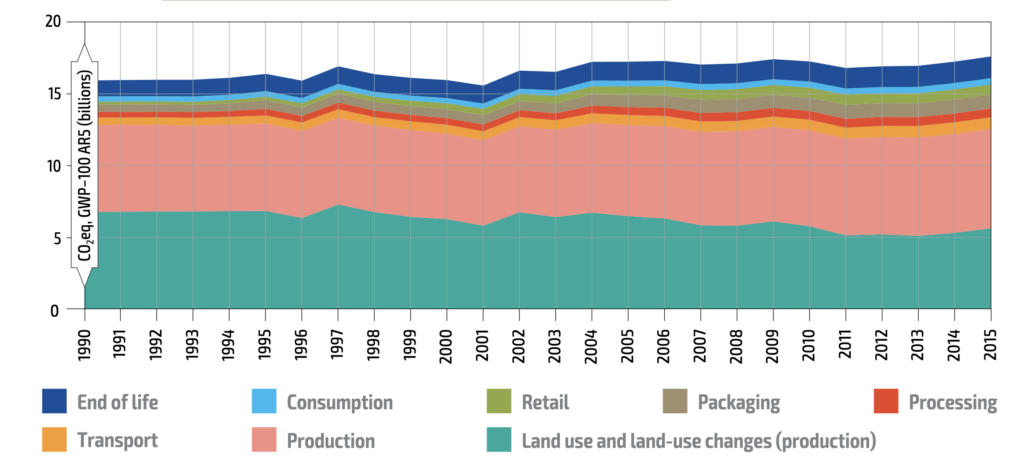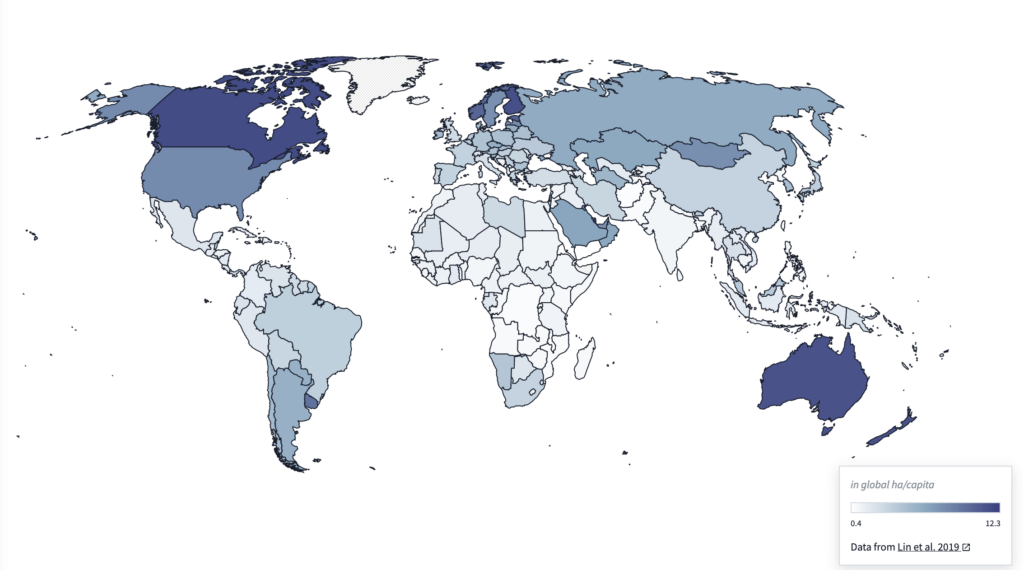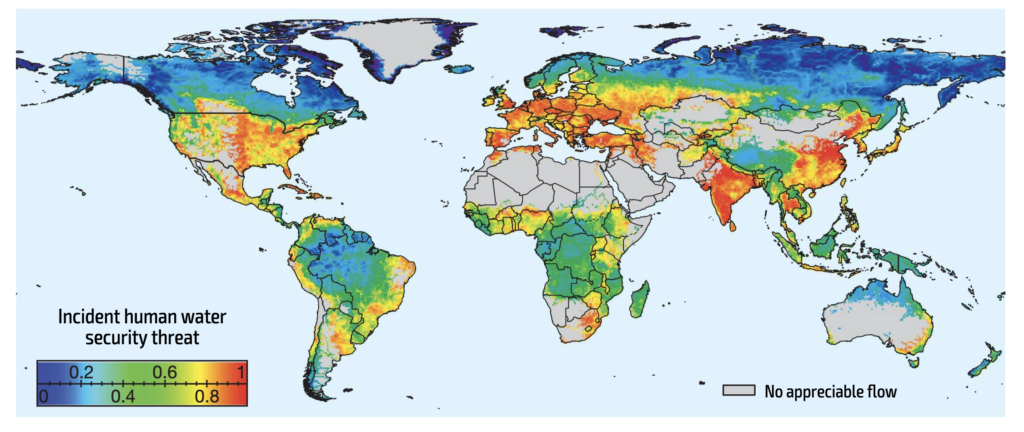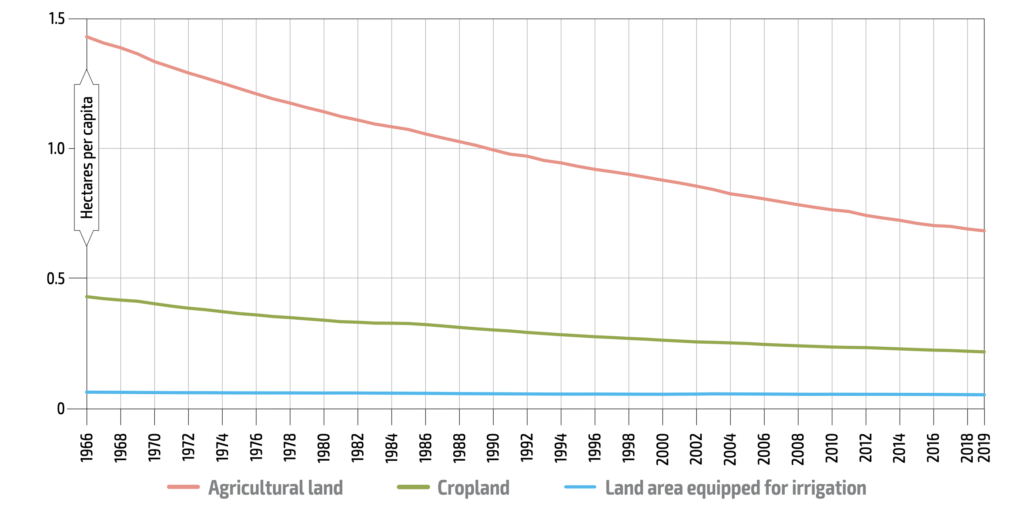Food systems are locked in a spiral of decline with environmental systems: they are also major causes of degradation of the environmental systems on which they themselves depend (including biodiversity, freshwater, oceans, land, and soils). They are the largest cause of anthropomorphic greenhouse gas (GHG) emissions (28% between 2007 and 2016), while agriculture alone accounts for 70-80% of freshwater use. Even without projected global population growth, food systems are operating well beyond planetary boundaries. The pressures placed on natural resources by food production have left 25% of the globe’s cultivated land area degraded, while deforestation for agriculture is recognised as a major and irreversible cause of biodiversity loss. Important indicators of impacts of agrifood sector on climate, environment and natural resources are GHG emissions, ecological footprint, freshwater withdrawals and crop land expansion.
Some key datasets to explore the climate and environmental outcome of food systems are FAOSTAT, AQUASTAT, and Footprint network
GHG Emissions
The latest FAO report used Crippa et al. 2021 to elaborate on the contribution of the global agrifood system in global GHG emissions. This dataset shows that while emissions resulting from land use and land-use changes activities (around 31 percent of the total from agrifood systems in 2015) dropped by 17 percent over the period 1990-2015, annual emissions resulting from agricultural production grew by 13 percent. This can largely be explained by the development of livestock production, a major source of methane, and, to a more limited extent, by more mechanization requiring fuel and electricity. Overall, post-farm is the major source of GHGs, while land use and land-use change are minor.
EAT-Lancet analysis further shows the impact of changing production and consumption patterns on GHG emissions in their future projections. The report suggests that a dietary shift to a more plant-based diets can reduce the projected increase of GHG emissions from the agrifood sector by 49%.

Source: FAO, 2022
Ecological Footprint
There is well-established evidence indicating an irrevocable and continuing decline of genetic and species diversity, and degradation of ecosystems at local and global scales. The main causes of erosion of biodiversity are destruction and fragmentation of habitat, and the overexploitation of species by humans, pollution, climate change, and disease and invasive species, mostly caused by unsustainable agriculture practices and agricultural intensification. However, agricultural systems could enhance ecological health, if sustainable practices were adopted. Global footprint network database contains data on the country wise ecological footprint of food production and consumption.
According to the projections in IPBES report, future reduction of biodiversity would reach 38 to 46 percent compared to the natural state by 2050, from around 34 percent in 2010. Drops are expected to continue in all world regions, but the greatest losses will most likely be in Central and South America, SSA and Asia.

Source: Lin et al. 2019 mapped by Food system dashboard
Fresh Water Footprint
The pressure on renewable freshwater resources is growing. Currently, irrigated agriculture accounts for more than 70 percent of global water withdrawals, the rest being used for industries (20 percent) and municipalities (10 percent). Around 41 percent of these withdrawals are not compatible with sustaining ecosystem services.
The IPBES report flags the key role of agriculture, particularly irrigation and agricultural intensification, and it projects that “nearly half of the global population will live in water-scarce areas in 2050, with the highest proportion in Asia.

Source: FAO, 2022
Land Use
The amount of land per person available for agriculture is continuously decreasing. Worldwide agricultural land accounts for around 37 percent of land area. Between 1961 and 2019, agricultural land increased by around 6 percent (283 million hectares) to reach 4.75 billion hectares. Most of this land was gained at the expense of forests. Some area was also lost as it became unsuitable for agriculture because of unsustainable agricultural practices, natural degradation or urban expansion, and the development of infrastructure and extractive industries.

Source: FAO, 2022